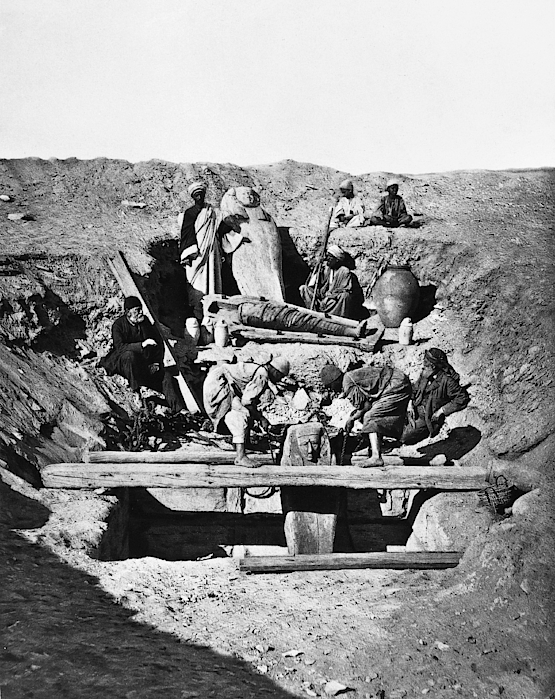The Unusual Tale of a Mummy Seller in 1875 Cairo, Egypt
In the annals of history, there are stories that often defy explanation, and one such intriguing account comes from the bustling streets of Cairo, Egypt, in 1875. It involves a man selling mummies, a practice that may seem bizarre and morbid to us today. However, it sheds light on a time when the world’s fascination with Egypt’s ancient past was at its peak, and mummies were not just historical artifacts but commodities that found their way into markets and museums.
The Mummy Seller:
During the late 19th century, Egypt was experiencing a period of great archaeological discovery and fascination with its rich history. The land of the Pharaohs was becoming increasingly accessible to the Western world, thanks to the advent of tourism and explorations by European archaeologists.
Amidst this environment, a mysterious man emerged on the streets of Cairo, peddling mummies to curious tourists and collectors. He was a vendor who understood the growing Western obsession with all things Egyptian, from pyramids to hieroglyphics.
Why Sell Mummies?
Selling mummies might seem macabre and even unethical by today’s standards, but there were several reasons behind this unusual trade:
Demand for Curiosities: The fascination with ancient Egypt led to a craze for acquiring mummies and artifacts associated with this mysterious civilization. People wanted to own a piece of this ancient history.
Souvenirs for Tourists: With the rise of tourism in Egypt, mummies became sought-after souvenirs for travelers eager to take home a piece of the exotic and historic.
Specimens for Museums: European and American museums were actively collecting Egyptian artifacts and mummies for their exhibits. Some of these institutions were willing to pay substantial sums for well-preserved specimens.
A Growing Antiquities Trade: The illicit trade in Egyptian antiquities was already thriving, and mummies were just one facet of this larger black market.
The mummy-selling trade, although peculiar, was a reflection of the era’s obsession with Egyptology. It was part of a broader trend of Egyptomania, which saw the spread of Egyptian motifs, art, and cultural elements in Western society.
Eventually, as Egypt sought to protect its archaeological heritage and curb looting, laws were enacted to prohibit the sale and export of antiquities. This marked the beginning of a more stringent approach to preserving Egypt’s ancient treasures.
The man selling mummies on the streets of Cairo in 1875 may seem like an odd character from a bygone era, but his story provides a window into a time when the world was captivated by the allure of Egypt’s ancient history. While we now view such practices as ethically problematic, the fascination with Egypt’s past has endured, albeit with a more profound respect for cultural preservation and heritage. The mummy seller, in a way, represents a chapter in the evolving relationship between the modern world and the wonders of ancient Egypt.
Hits: 15


